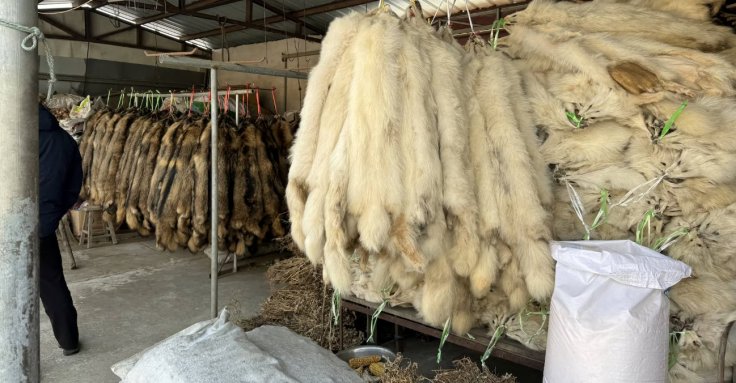A recent study published in the journal Nature has raised alarms about the potential dangers of animals farmed for fur, food, or traditional medicine. The research highlights that species like raccoon dogs, mink, and muskrats—commonly farmed for their fur—carry numerous viruses, some of which could pose significant risks to human health. The findings suggest that these animals may serve as reservoirs for emerging pathogens, potentially triggering new pandemics.

Between 2021 and 2024, researchers collected samples from 461 animals found dead due to disease on fur farms across China. The animals studied included minks, raccoon dogs, foxes, guinea pigs, and rabbits. The research team examined tissues from the lungs, intestines, and other organs to identify viral pathogens. Their investigation revealed a staggering 125 different viruses, 36 of which were previously unknown. Even more concerning, 39 of these viruses were classified as high-risk, meaning they have the potential to jump between species, including humans.
Among the viruses detected, several strains of influenza A virus were found in guinea pigs, minks, and muskrats. These included H1N2, H5N6, and H6N2. Additionally, the researchers identified multiple coronaviruses, expanding the known host range of these viruses. Seven different species of coronaviruses were detected, although none were closely related to SARS-CoV-2, the virus responsible for COVID-19. However, the study noted the presence of the "Pipistrellus bat HKU5-like virus" in two minks. This virus, previously only identified in bats, is closely related to the Middle East Respiratory Syndrome (MERS) coronavirus, which can be deadly to humans.
Virologist Edward Holmes, a professor at the University of Sydney and co-author of the study, expressed serious concerns about this discovery. "That we now see that it jumped from bats to farmed mink must serve as an alarm bell," Holmes told AFP. He emphasized the need for close monitoring of this virus to prevent potential outbreaks.
The study also identified other zoonotic viruses, such as hepatitis E and Japanese encephalitis, in some of the farmed animals. These viruses have previously been transmitted to humans, further underscoring the risk posed by fur farming as a hub for viral transmission. Researchers documented potential virus transmission between farmed and wild animals, as well as from humans to farmed animals, highlighting the complex web of viral spread.
The rise of zoonotic diseases—those that can be transmitted from animals to humans—has been a growing concern since the COVID-19 pandemic, which is widely believed to have originated from bats before spreading to humans. The study's findings emphasize the role of fur farms as potential hotspots for viral spillovers, prompting the researchers to call for increased surveillance and regulation of fur farm animals to prevent future health crises.
Holmes and his team are urging authorities to monitor fur farms closely to mitigate these risks, stressing that fur farming represents an important transmission hub for viral zoonoses. Without proper action, the likelihood of new, potentially devastating pandemics remains high.









